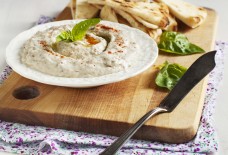The Inside Guide to Fez, Morocco's Historic Second City
SOURCE: NATIONAL GEOGRAPHIC
BY: AMANDA CANNING
To step into the Fez medina is to enter one of the greatest medieval cities in the world. Its tangled network of lanes is home to extraordinary Islamic architecture — elaborate mosques, palaces and madrasas (theological schools) — but it’s the magic of the everyday that enchants most: artisans hammering patterns into brass, donkeys ferrying sacks of spices between the souks, the waft of fresh mint tea drifting from a doorway. It may seem like a vision from Arabian Nights, but this is no fantasy — Fez is a living, working city rather than one preserved largely for tourists, and it’s that character that makes it so bewitching.
Spend time getting lost in the labyrinth of the Medina, a UNESCO World Heritage Centre, making new discoveries every time you set out — perhaps an elegant courtyard or a decrepit palace, its tiled floors and creaking colonnades awaiting renovation. First, order a fresh fruit smoothie and admire the views of the old city from the rooftop of Nagham Cafe, close to the Bab Bou Jeoud gate that leads into it.
Apart from the odd donkey, the medina is traffic-free and made for ambling. A fine starting point is the Tala’a Kebira, a long street winding through the old city. There are numerous sites of architectural interest along the way, marked by two medieval madrasas at either end: the Bou Inania Madrasa in the south west and Al-Attarine Madrasa in the north east. Both are fine introductions to Moroccan craftsmanship, with every surface decorated in intricate tiling, plasterwork and carved cedar wood.
It’s best not to be in too much of a hurry to get between those two points — hours can be lost meandering through this city. Stop to sample snails or fava bean soup from a street stall, but if you’re after something more substantial to eat, head up to the rooftop of Cafe Clock, near the southern end of Tala’a Kebira. There are some interesting local dishes on the menu, including camel burger, and the cafe also hosts cooking classes that include a tour of a local market to pick out ingredients — a good way to get a handle on Moroccan cuisine.
The nearby Dar Batha Museum tells the story of the unique architectural and interior features you’ll spot all over Fez. Dedicated to Moroccan arts and crafts, from zellige tiles (a handcrafted Moroccan style) to tadelakt plasterwork, the museum is housed in the former summer palace of a sultan and has a beautiful garden. Many of its exhibits were rescued from derelict houses in the medina, and there’s a similar atmosphere of faded grandeur at the Palais Glaoui, 10 minutes away. The elegantly timeworn, 18th-century residence is a warren of terraces and courtyards, no less impressive for its dilapidation.
But Fez’s craft scene is very much a living tradition, with everyone, from coppersmiths to carpet-makers perfecting their creations in tiny workshops. One of the city’s most famous products is its leather goods, and no trip to Fez should skip the Chouara Tannery. Leather hides have been washed and dyed in this extraordinary complex of baths since at least the 16th century.
So pungent is the smell of the tannery that you might need to scrub the experience from your skin. There are public Hammams, or steam baths, across the city, including the marble-lined Hammam Mernissi & Spa. Many riad hotels have their own private hammams, marrying traditional methods with products such as aromatic oils to create a more luxurious experience. The tiled spa at La Maison Bleue is one of the best.
Suitably restored, tuck into dinner at The Ruined Garden. Set in a former merchant’s house, the restaurant serves dishes such as beef tagine and roast lamb alongside vegetarian options in a courtyard garden. Afterwards, watch the sun set over the Atlas Mountains as the muezzin’s call to prayer rises above the city from the terrace at Riad Fès, close to the Ruined Garden.
One of the city’s most famous products is its leather goods, and no trip to Fez should skip the Chouara Tannery. Leather hides have been washed and dyed in this extraordinary complex of baths since at least the 16th century.
Tips from locals
Kate Kvalvik and her husband Alaa Said restored an ancient former palace in the medina and now run it as the guesthouse Dar Seffarine.
Ain Nokbi
This district, just outside the medina, is home to a group of workshops specialising in clay tiles (zellige) and pottery. Moroccan zellige has an extensive colour palette and complex geometry. In the workshops, you can observe the whole tile-making process.
Nejjarine Museum
My favourite museum in Morocco is in an impressive building built in the early 19th century as an inn for visiting traders. Today, it houses a private collection of wooden arts and crafts from across the country. There’s also a peaceful rooftop cafe.
Guided tours
My architect husband offers private tours of Islamic architecture in the city. They focus on private houses in residential areas, with an opportunity to see some undergoing restoration, as well as completed homes.
Published in the September 2021 issue of National Geographic Traveller (UK)








